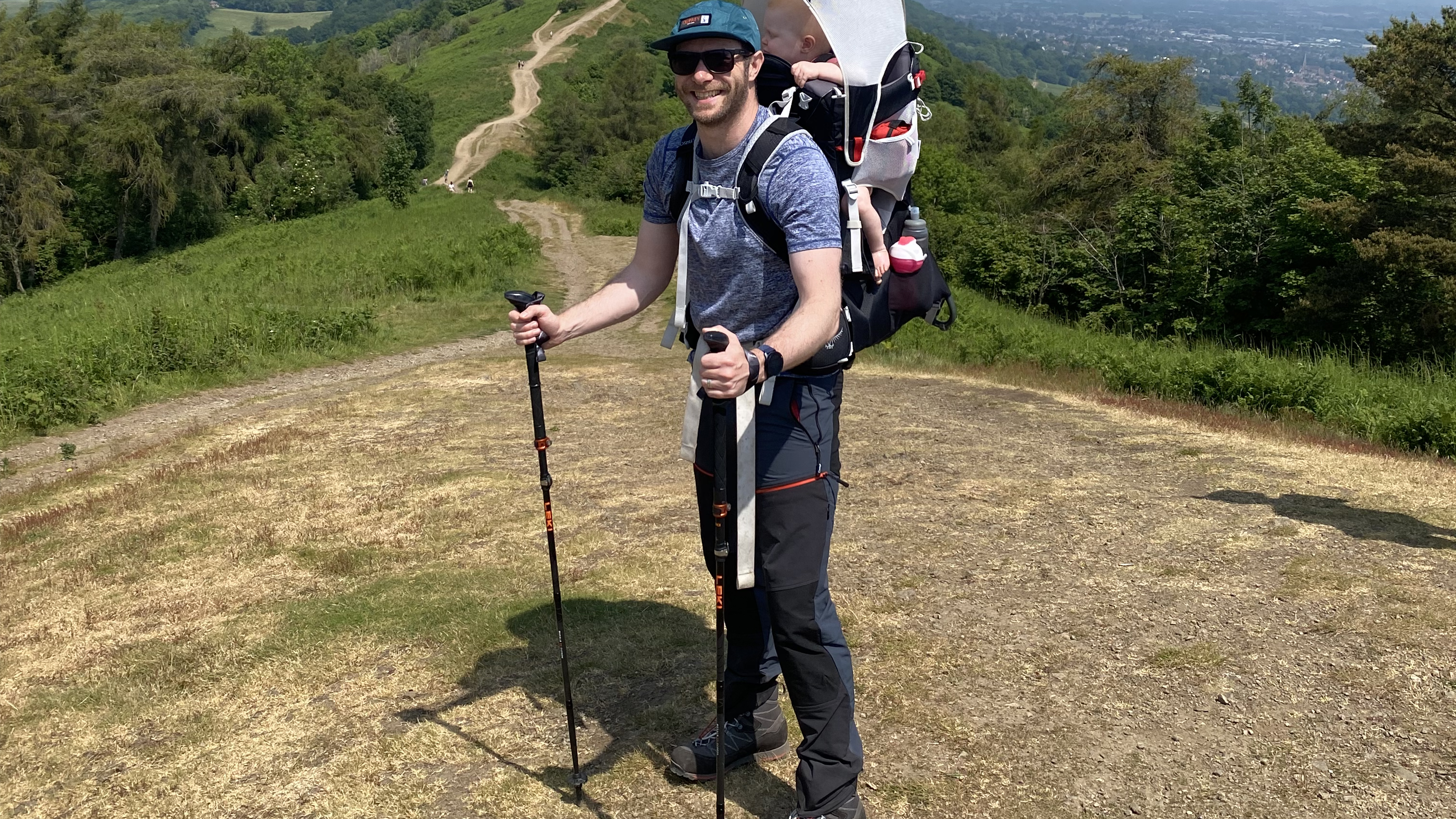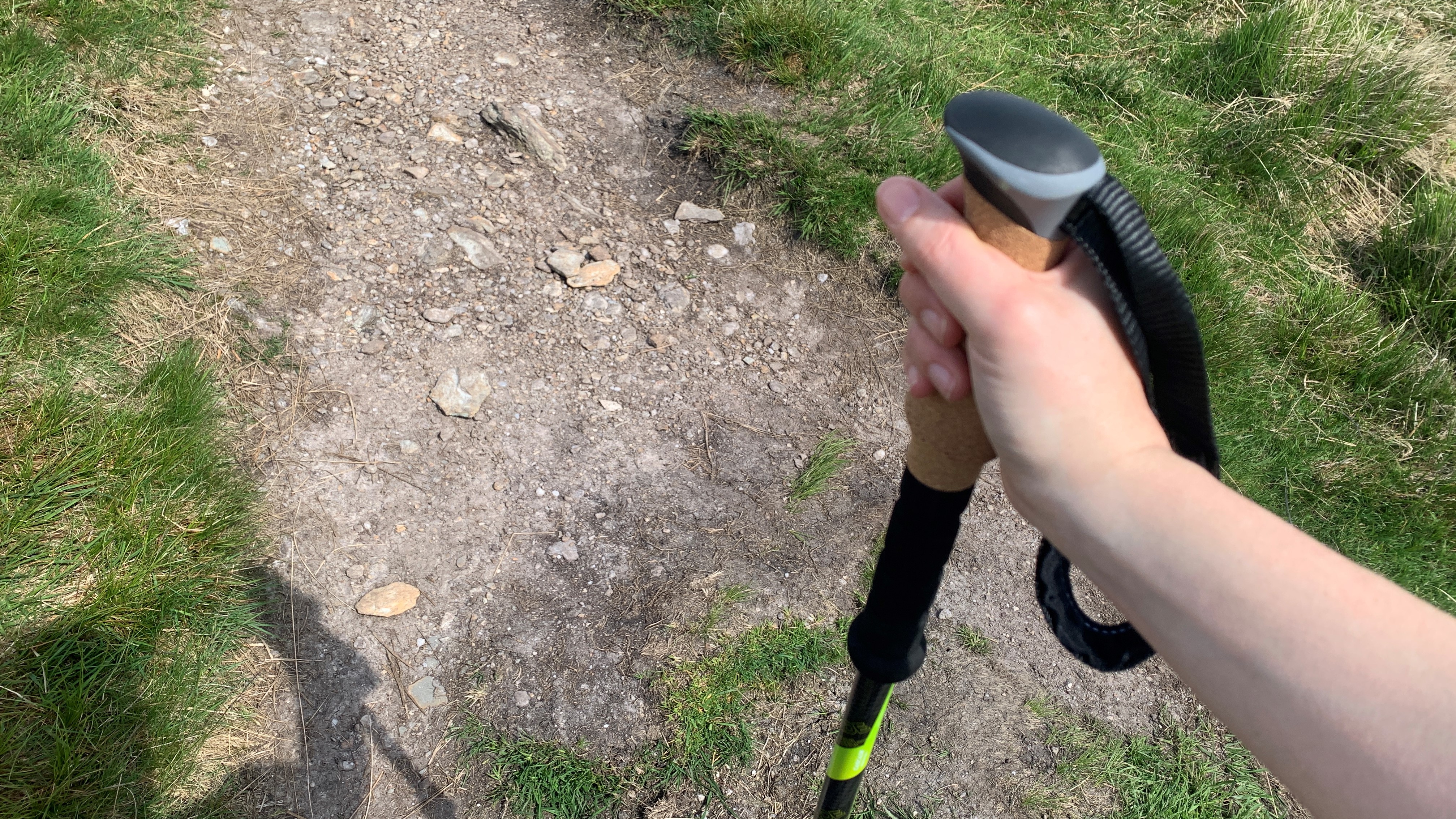Trekking poles vs running poles: what’s the difference?
We explain the differences – and overlap – between trekking poles and running poles

I don’t often see young folk on the trails using trekking and running poles, but in case you’re wondering, poles aren’t just for old people. In my late twenties and early thirties, I’d carry a collapsible ski pole for hiking down boulder fields on Colorado 14ers in order to save my knees. After I tore my ACL skiing, I decided to get myself properly equipped and got a pair of Leki trekking poles that I’ve now been using on most hikes for the last six or seven years. I love how much power and efficiency they give me on the climbs, and how they reduce the weight on my knees when I’m heading down.
Over the last couple of years, as I’ve got more into trail running, I’ve realized they can be super useful for brisker adventures too. After all, a lot of trail running – or mountain running anyway – involves hiking the uphills. If you don’t want to lose too much time here, poles will help.
And in case you’re wondering, poles also aren't just for amateurs, like myself. I recently went to Chamonix to cover the UTMB, the world’s most iconic trail race, and of the 2,700 elite athletes there, the majority had their running poles out on the very first climb of the 106-mile race.

Hiking and trekking poles are developing into a really specialized piece of technical equipment, and whether you’re trekking trails in hiking boots or scampering across peaks in your trail running shoes, there’s a good chance you’ll benefit from a pair. But which do you choose? In this article, we explain the differences – and overlap – between trekking poles vs running poles to help you decide which you need.
Trekking poles vs running roles: weight
Because you’re moving faster with running poles than you are when you’re trekking, it probably won’t surprise you to learn that running poles are, generally speaking, lighter than trekking poles. For example, the Mountain King Carbon Skyrunner weigh in at just 7.9 oz per pair, while most of the best trekking poles are at least twice that. The lighter weight helps you move faster whether your poles are in your hands or folded away in your running backpack.

Trekking poles vs running roles: packability
Speaking of folding your poles away in your backpack, most modern trekking and hiking poles will be collapsible, but a good pair of running poles will almost definitely fold in at least two places, while trekking poles might only fold in one place. That means that a pair of running poles like the Leki Micro Trail Vario are only about 15 inches long when folded, while trekking poles can be far longer when folded, as in the Leki Cross Trail Lite Carbon which are about 25 inches long folded away. That said, there are definitely exceptions to this rule if you’re seeking something that easily fits inside your daypack to free up your hands when you’re scrambling.
Trekking poles vs running roles: materials
The reason that running poles are usually lighter than trekking poles is because of the materials they’re made from. The shaft of running poles will be made from either carbon, which is lightest and most expensive, or aluminum, which is usually a bit heavier but stronger. The handles will usually be made using a lightweight foam.
All the latest inspiration, tips and guides to help you plan your next Advnture!
Trekking poles, meanwhile, can be made from carbon, aluminum or even steel, which will be the heaviest (and cheapest) option, while the handles can also be made from foam, but may be made using cork, like the Leki Makalu Lite COR-TEC AS, which is malleable, comfortable and wicks sweat.

Trekking poles vs running roles: price
Because of the lightweight nature of running poles and the tech that goes into making them so portable, you’re probably going to see a heftier price tag for a pair of running poles than for trekking poles. Don’t get us wrong, a good pair of trekking poles can be really pricey, but we’ve tested some as cheap as $25 - $30, whereas running poles are more likely to set you back over $100.
| Header Cell - Column 0 | Trekking poles | Running roles |
|---|---|---|
| Weight | As light as 7.9 ounces per pair | Usually start at 15 ounces per pair |
| Packability | Usually around 25 inches folded | Fold away to as small as 15 inches long |
| Materials | Shaft may be carbon, aluminum or steel, handles may be cork or foam | Shaft is carbon or aluminum, handles are foam |
| Price | Can be as cheap as $25, expensive options available | More expensive |
Trekking poles vs running roles: the verdict
As you might have noticed, while you might be able to find a pair of trekking poles that look drastically different to running poles – steel shaft, cork grips and not foldable – there can be a fair amount of overlap between the two and it is possible to find a pair of collapsible carbon trekking poles with foam handles that you can use for fast-paced adventures as well as hiking.
So which do you need? Well, if you’re looking for poles for trail races and want to lose every possible ounce, it makes sense to get an activity-specific pair that are as light and packable as possible. However, if you are simply seeking poles that you can use across various pursuits, you may be able to save money by finding a light, foldable pair of trekking poles that can be used across activities.
Julia Clarke is a staff writer for Advnture.com and the author of the book Restorative Yoga for Beginners. She loves to explore mountains on foot, bike, skis and belay and then recover on the the yoga mat. Julia graduated with a degree in journalism in 2004 and spent eight years working as a radio presenter in Kansas City, Vermont, Boston and New York City before discovering the joys of the Rocky Mountains. She then detoured west to Colorado and enjoyed 11 years teaching yoga in Vail before returning to her hometown of Glasgow, Scotland in 2020 to focus on family and writing.

